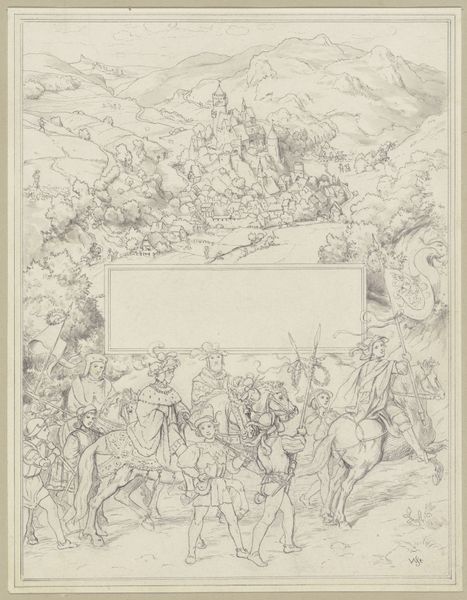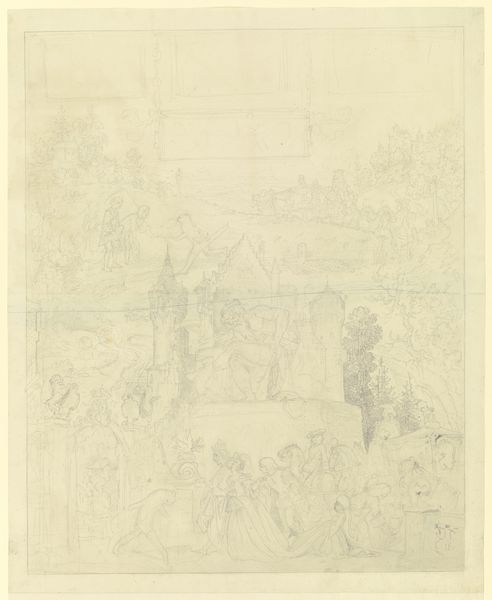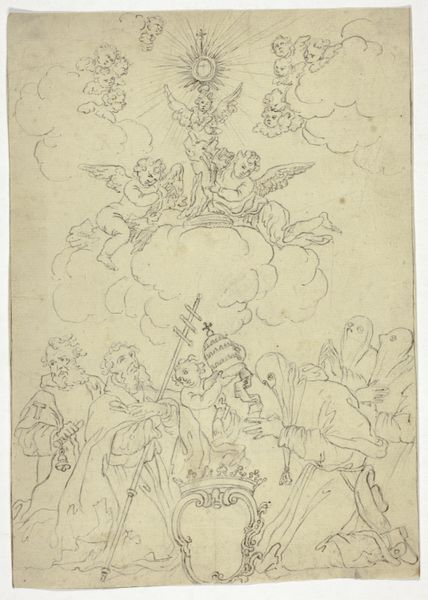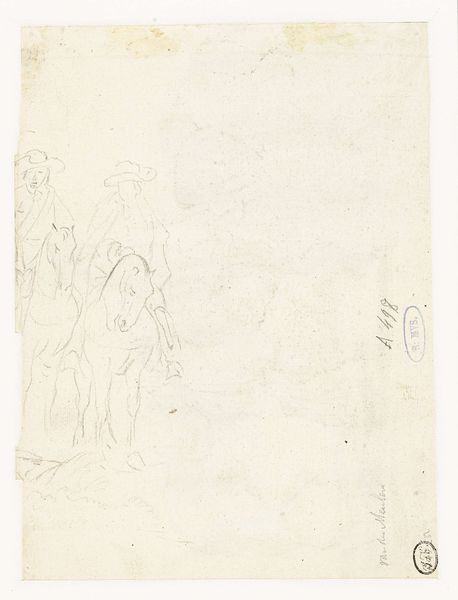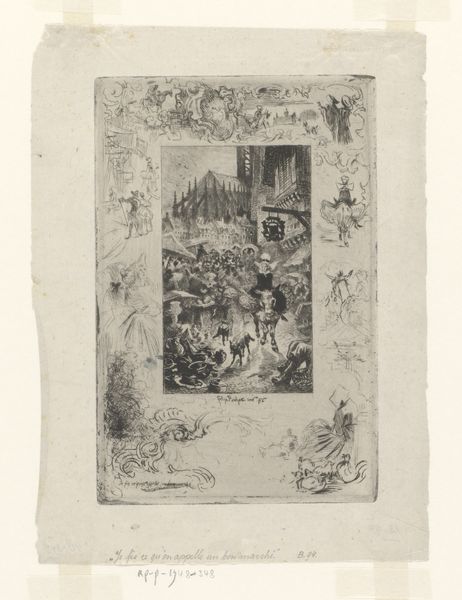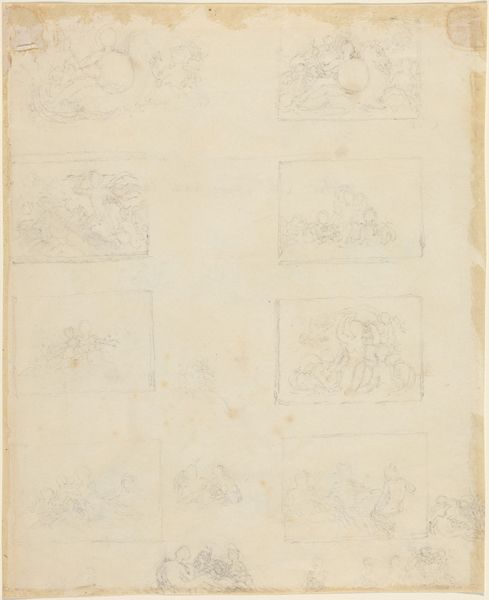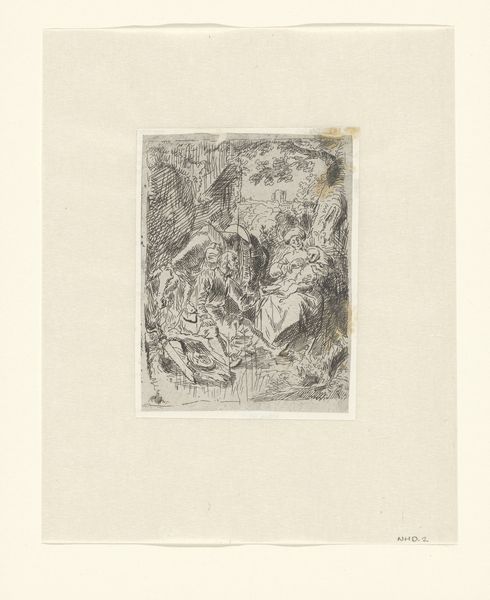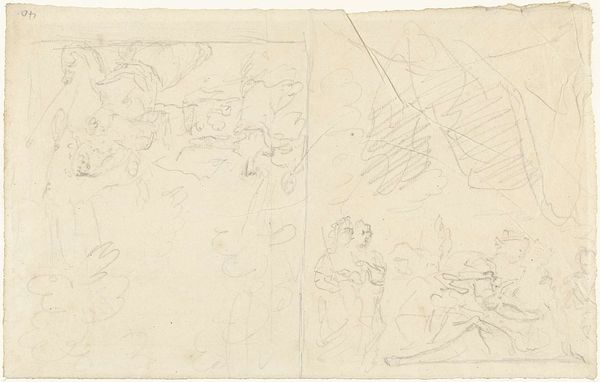
Copyright: Public Domain
Editor: Wilhelm Steinhausen’s ink drawing, "Encounters on the Journey," created around 1884, presents figures journeying within a decorative border. It's quite intriguing! What strikes me is the clear delineation between the narrative scenes around the border and the empty central space. How do you interpret this work? Curator: This absence is certainly noteworthy. The figures—soldiers, wanderers—frame an emptiness, inviting us to question what's missing or unrepresented. Given the period and the figures depicted, it prompts critical inquiry into who is not present, whose stories aren’t being told within this romantic vision of the journey. Editor: So you see this piece as a commentary on the historical narratives? Curator: In part, yes. Academic art from this time often presented a very specific and carefully curated version of the past. By leaving the centre blank, Steinhausen perhaps subtly critiques the erasures and exclusions inherent in these grand historical paintings. Who were the unseen laborers, the dispossessed, the colonized who facilitated these journeys and historical moments? What’s obscured is as vital as what's shown. Editor: That's fascinating, the emptiness takes on a new weight now. Like a space for all the untold stories. Curator: Precisely. And that encourages us to examine our own position as viewers. What biases do we bring when engaging with history and art? Are we actively seeking the marginalized voices or passively accepting the dominant narrative? Editor: It gives the image a real sense of agency! This has been an amazing learning experience! Curator: Indeed! Recognizing art as an active participant in shaping historical consciousness truly enriches our understanding.
Comments
No comments
Be the first to comment and join the conversation on the ultimate creative platform.
